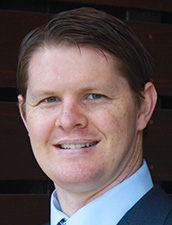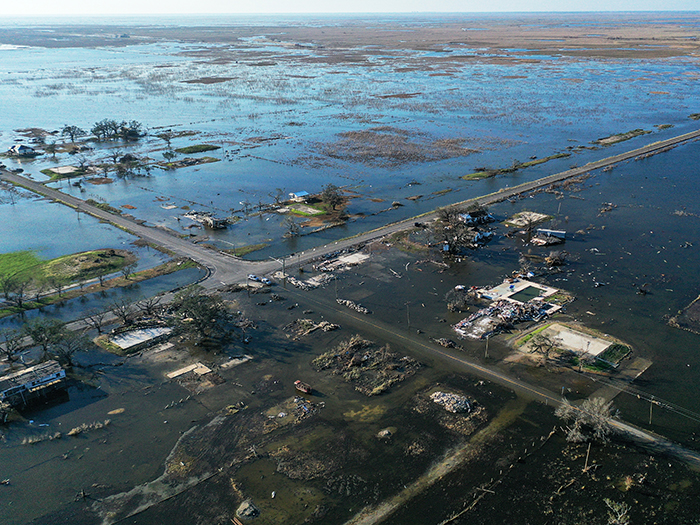Welcome to the Motel California: A Broker’s Role in Housing the Homeless

Every January, the U.S. federal government conducts a “Point-in-Time” count of the country’s homeless population.
And every year, the state of California leads the nation in homelessness. As of 2022, 30% the U.S.’ homeless population resided in the state.
It’s no wonder, then, that the state is working hard to find a solution to give shelter to the unhoused.
“We have the largest population of unhoused, and I think it’s become, if not number one, number two for most municipalities in the state of California. They are all dealing with this issue,” said Kyle Powell, account executive at Aon and a California resident.
“The problem is, they’re talking 70,000, 80,000 people whom you have to build houses for and getting them into shelter as soon as possible. It’s not something that can happen overnight.”
Individual houses can be costly, and as Powell mentioned, take time and resources to build from the ground up. It’s a good start to getting the unhoused sheltered, but it has its setbacks. And when a global pandemic graced our shores, California had to pivot its approach entirely to accommodate homelessness during shelter-in-place.
“A lot of funding has been passed throughout California [since COVID]. Different municipalities have been given access to a grant which would allow them to participate in Project Roomkey.”
Established in March 2020, Project Roomkey was a statewide response to get homeless people housed during the height of COVID-19. This project enabled municipalities to convert existing hotels and motels into shelters at an accelerated rate.
As the pandemic progressed, the project grew into the Homekey grant program, which created additional opportunities for municipalities to acquire old or abandoned hotels, motels, apartments and other similar buildings through grant money and convert them to long-term housing for the homeless.
It’s a noble cause, something that promises to bring lasting and positive change for the state’s unhoused residents. But, like all new things, Projects Roomkey and Homekey require an expert’s eye on the back-end logistics.
Luckily, Powell has spent his career working with public entities and knows a thing or two about the resources it takes to get these projects off the ground.
Brokering for a Cause
One municipal client of Powell’s came to him with a request: Help us acquire insurance for two motels we’ll be purchasing. And, also, we’re converting them into shelters for the unhoused.
“With this particular example, the risk manager within the municipality didn’t even know it was happening until they got the call that it was greenlighted,” Powell explained. “That just shows the urgency of the situation.”
Public entities are working to get ahead of the challenge. But that means backend logistics aren’t always top of mind. Powell had to rely on his brokering prowess to get the ball rolling — and fast.
“The insurance policy that they had for all of their locations wasn’t really built for anything like this,” he said.
First and foremost, Powell knew, he needed to get the insurance carrier up to speed. If the carrier didn’t understand the risk, then the municipality would be left searching for a new policy entirely.
Powell began his assessment of the situation by looking at the motels themselves.
“These motels are not newer locations,” he explained. “Most of them were built in the ’50s and ’60s, maybe ’70s.”
They would have to be brought up to code to be fit for purpose. That meant renovations. That meant making everything ADA-compliant. That meant updating plumbing, electric and more.
Another challenge came in the form of safely removing occupants who had taken shelter in the abandoned buildings before they’d been bought.
If anyone was unknowingly left inside the building as reconstruction began, the municipality would face the risk of claims.
That meant “making sure that when nobody’s at the location, it’s fenced off; making sure there’re security guards who are going there 24/7; making sure that any people who were in there prior, giving them ample time so that they could find other places to live.”
Both of these challenges were easy to communicate to the insurer, Powell said, but the real finesse came in explaining the long-term benefits. Powell knew the insurer needed a why to back the project.
“It was really about getting an idea of what the municipality’s plan was in the future,” he said.
“Who’s going to be the organization running these shelters? Who’s going to pay for insurance? Who’s making sure that once these [renovations] are completed, they don’t have incidents or other potentials for losses?”
Powell took it one concern at a time.
The conversation started with explaining the short-term: Two motels would be converted into homeless shelters. They would need these specific renovations to be brought up to code. They required this level of security during renovations to prevent claims.
Then, he and his team addressed the long-term: The motels will have this many units and will house this many occupants. The program to house individuals would give the unhoused 60 days inside the motel in order to get them off the streets and, hopefully, into better, self-sustaining arrangements.
“We made sure that there was more stability and permanality to the issue. We worked with the municipality to create a roadmap for the addition of more locations, so that this wouldn’t be a one-and-done project,” he said.
Powell’s approach worked; the carrier was sold on the intricacies of the plan and signed on in 2022. They also signed again with the municipality this renewal season because they were comfortable with the risk itself.
Currently, the two motels are still in the renovation stage, but the blueprint is there for both to create a lasting imprint on the municipality and California at large.
A Servant of the Public Sector
Public entities exist for exactly that: the public. Powell is no stranger to the way things change and grow for these agencies at the drop of a hat.
“The public sector’s challenges are different than a private entity in that they’re so much larger. Sometimes, you have a department saying one thing, a city council deciding another. We need to work with that entity and really get the carriers to understand all those levels,” he explained.
Powell bridges the gap between his clients’ wants and the carriers’ needs in order to make projects like this get off the ground. It’s this effort that earned him a Public Sector Power Broker nod this year.
But as knowledgeable and fine-tuned as Powell is at understanding and communicating public sector clients’ needs, he’s just as humble when it comes to giving credit where credit is due.
“I am proud that the municipalities are doing something about homelessness. It’s difficult to see people on the streets like that. My helping them find insurance is only a small contribution to what they’ve been doing,” he said. &











